 |
 |
 |
| |
COPD doubles heart attack risk with HIV regardless of smoking / "COPD and the risk of MI by type in people living with HIV"
|
| |
| |
Conference on Retroviruses and Opportunistic Infections (CROI), March 4-7, 2019, Seattle
Mark Mascolini
WEBCAST: http://www.croiwebcasts.org/console/player/41070?mediaType=slideVideo&&crd_fl=0&ssmsrq=1554044309810&ctms=5000&csmsrq=5067
Chronic obstructive pulmonary disease (COPD) doubled the risk of myocardial infarction (MI), independently of smoking, in a study of 22,596 people with HIV [1]. COPD boosted risk of both type 1 and type 2 MIs.
Research confirms a heightened risk of cardiovascular disease, including MI, in people with HIV. Classic and HIV-specific cardiovascular risk factors contribute to this association, but how COPD affects MI risk remains unclear. Previous work links HIV infection to greater COPD risk [2,3] and ties COPD to markers of compromised immunity (nadir CD4 count), inflammation, and immune activation. Those three factors also figure in MI risk in HIV populations.
Some work links COPD to cardiovascular disease in people without HIV. And other work ties COPD to preclinical markers of heart disease in people with HIV [4], but not to cardiovascular events. University of Washington researchers and collaborators at other centers conducted a new study to determine whether COPD is associated with greater MI risk in people with HIV and whether that association differs by MI type. Type 1 MIs involve plaque rupture with thrombus; type 2 MIs involve vasospasm or an oxygen supply-demand mismatch. Sepsis, bacteremia, or recent cocaine use can cause type 2 MI, which frequently affects people younger than 40.
The study involved HIV-positive people in the US CNICS cohort, which includes prospectively collected data on 35,000 people plus adjudicated outcomes like MI. The COPD analysis focused on 22,596 people with the necessary follow-up data from 5 CNICS sites in 5 US states. The researchers defined COPD by an algorithm using health record data validated against spirometry. Up to 3 reviewers determined whether participants had a probable or definite MI and whether MIs were type 1 or type 2. They used multivariable Cox proportional hazards models to explore associations of COPD with MI and with type 1 or 2 MI.
The CNICS team counted 451 new COPD diagnoses during follow-up (incident COPD), 895 COPD cases at the first study visit (prevalent COPD), and 21,250 people without COPD. Those three groups had median ages of 45, 47, and 40 years, proportions of women were 35%, 34%, and 21%, proportions of blacks 53%, 48%, and 43%, and proportions of whites 41%, 46%, and 41%. Lower proportions with incident COPD (18%) or prevalent COPD (19%) had a viral load above 400 copies than did the group without COPD (25%). CD4 nadir was lower with incident COPD (236) and prevalent COPD (211) than without COPD (271). Higher proportions of people with incident COPD (42%) and prevalent COPD (48%) than without COPD (25%) ever smoked.
During 6 years of follow-up, researchers counted 704 MIs, including 390 type 1 MIs (55%) and 314 type 2 MIs (45%). While sepsis or bacteremia caused 113 type 2 MIs, 201 type 2 MIs did not involve sepsis.
An analysis adjusted for age, sex, race, viral load, nadir CD4 count, diabetes, hypertension, statin use, and CNICS site linked COPD to more than a doubled risk of MI (adjusted hazard ratio [aHR] 2.40, 95% confidence interval [CI] 1.93 to 2.98). That risk remained more than doubled after further adjustment for smoking (aHR 2.23, 95% CI 1.78 to 2.78) and pack-years smoking (aHR 2.08, 95% CI 1.61 to 2.70).
An analysis adjusted for the main variables plus pack-years independently tied COPD to almost a 75% higher risk of type 1 MI (aHR 1.73, 95% CI 1.21 to 2.48) and to well over a doubled risk of type 2 MI (aHR 2.65, 95% CI 1.82 to 3.86). In the same kind of analysis, COPD remained a strong independent predictor of type 2 MI due to sepsis or bacteremia (aHR 2.43, 95% CI 1.25 to 4.73) and to type 2 MI due to other causes (aHR 2.77, 95% CI 1.75 to 4.38).
The researchers suggested that several mechanisms can explain heightened MI risk with COPD: inflammation/immune activation, endothelial dysfunction, smoking/other substance use, pneumonia/sepsis, acute exacerbation of COPD, and hypoxia--as well as traditional MI risk factors. Different mechanisms, they proposed, may underlie the links to type 1 and type 2 MI.
The CNICS team concluded that COPD confers "a substantial increase in risk for acute MI, both type 1 and type 2, independent of smoking in people with HIV." They called for further research into mechanisms explaining these associations and for efforts to refine prevention and treatment strategies.
References
1. Crothers K, Harding BN, Whitney BM, et al. COPD and the risk of MI by type in people living with HIV. Conference on Retroviruses and Opportunistic Infections (CROI). March 4-7, 2019. Seattle. Abstract 31.
2. Makinson A, Hayot M, Eymard-Duvernay S, et al. HIV is associated with airway obstruction: a matched controlled study. AIDS. 2018;32:227-232.
3. Triplette M, Crothers K, Attia EF. Non-infectious pulmonary diseases and HIV. Curr HIV/AIDS Rep. 2016;13:140-148.
4. Besutti G, Raggi P, Zona S, et al. Independent association of subclinical coronary artery disease and emphysema in HIV-infected patients. HIV Med. 2016;17:178-187.
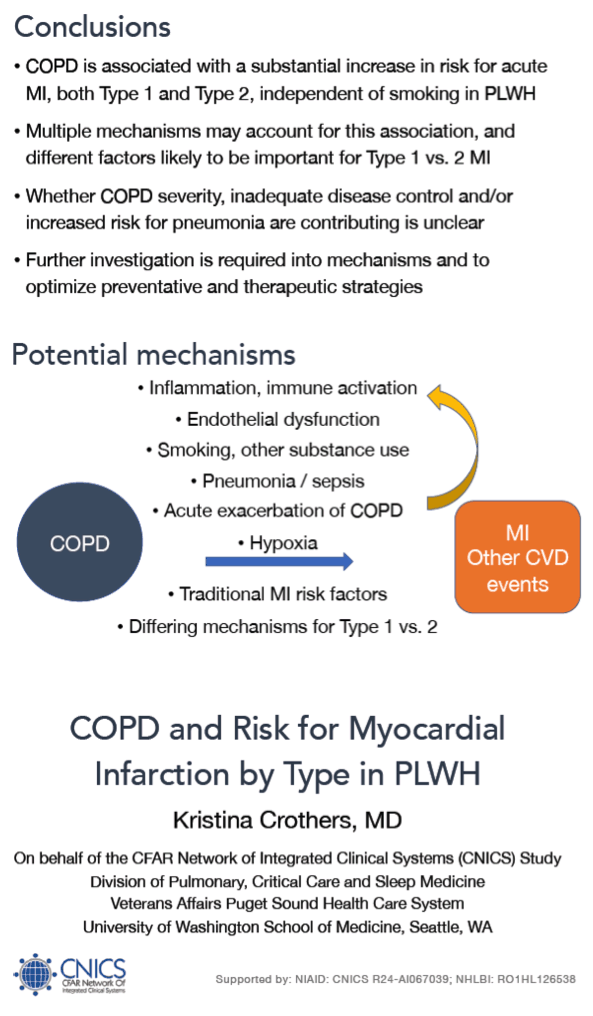
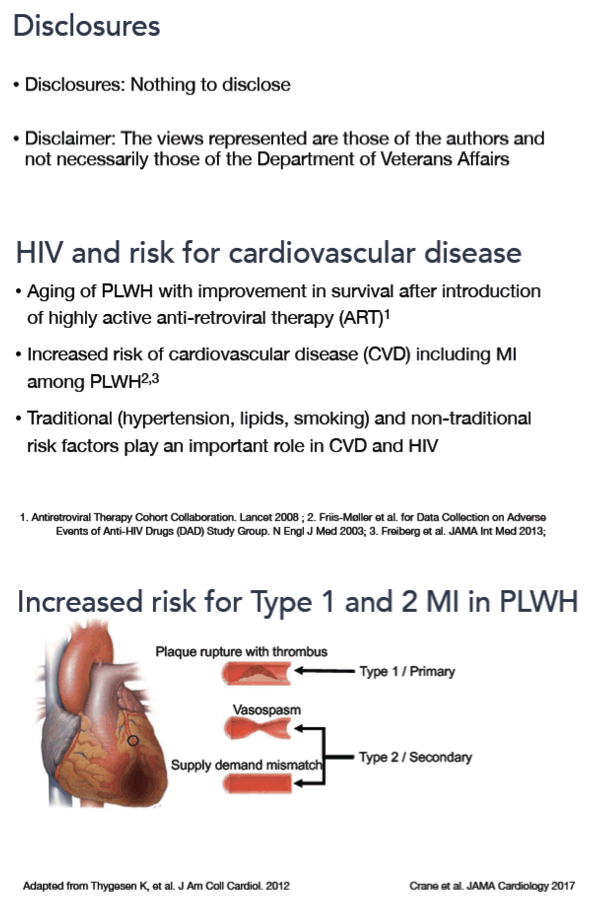
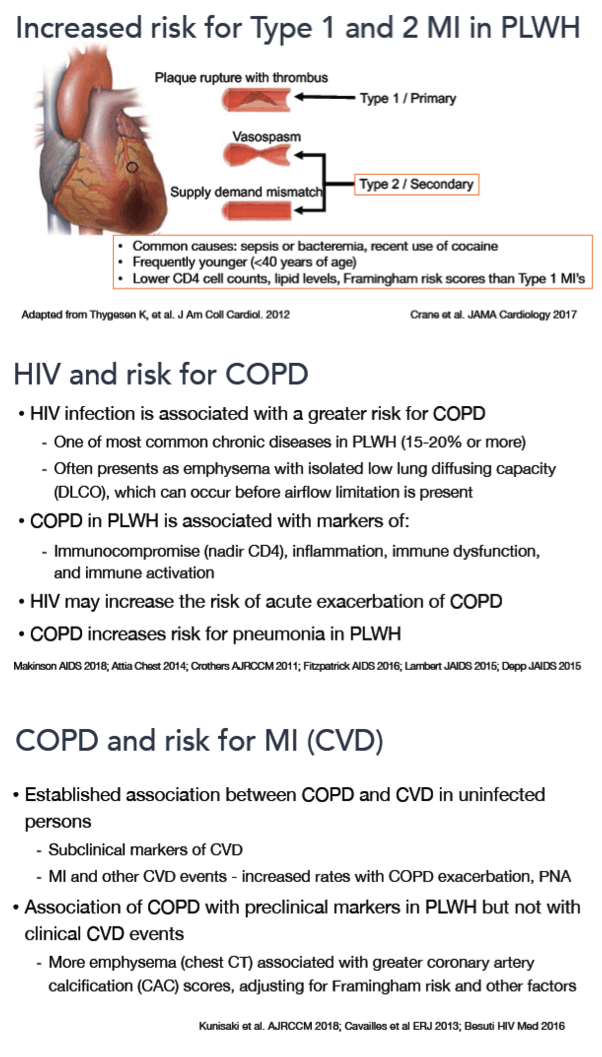
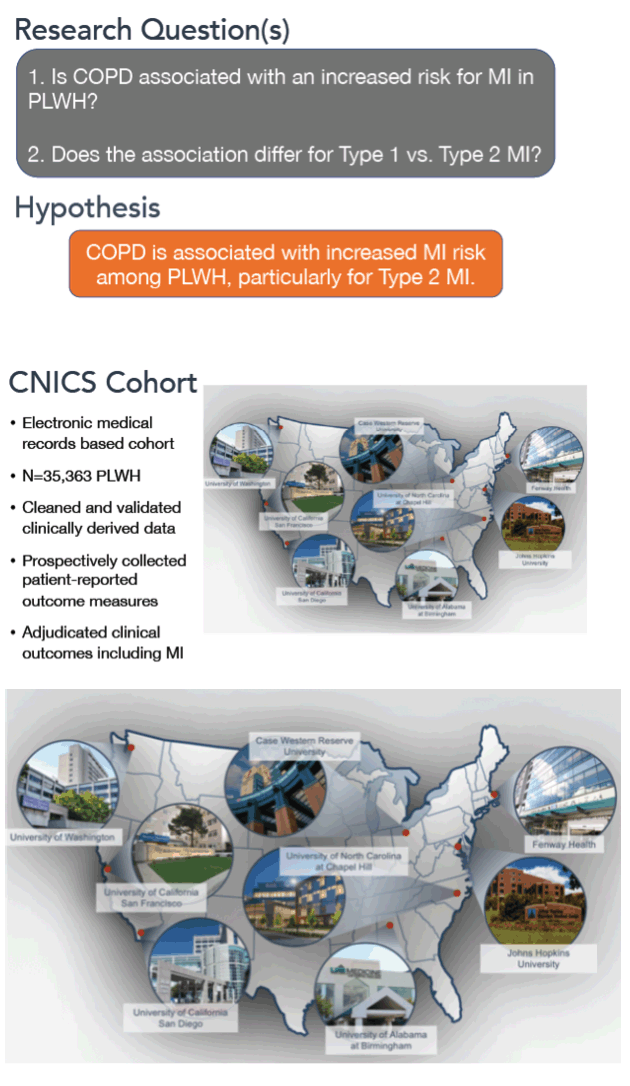
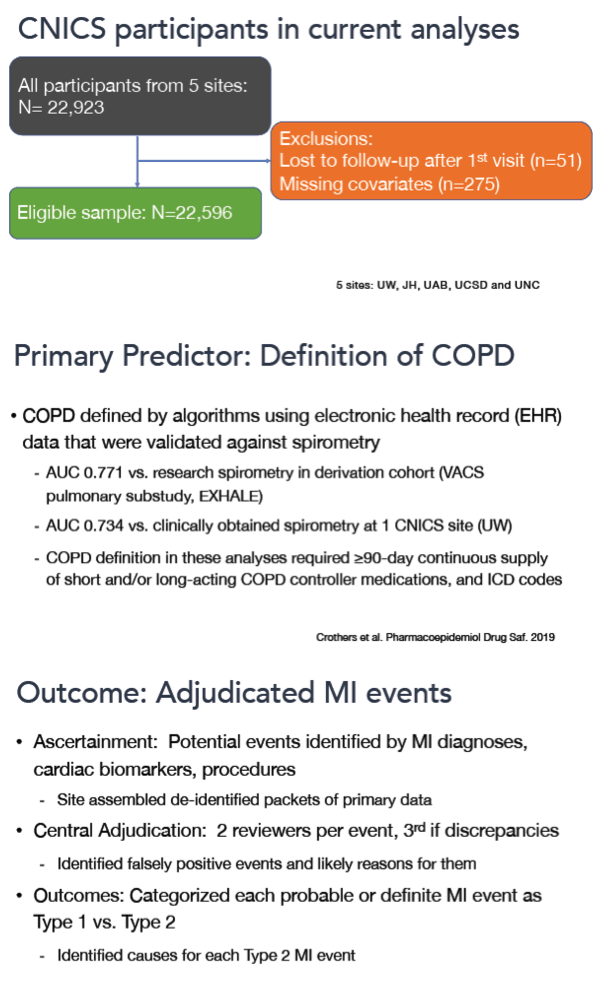
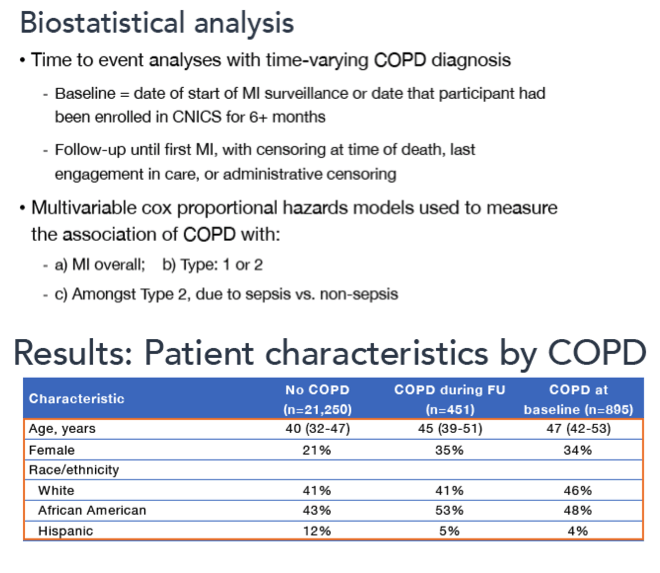
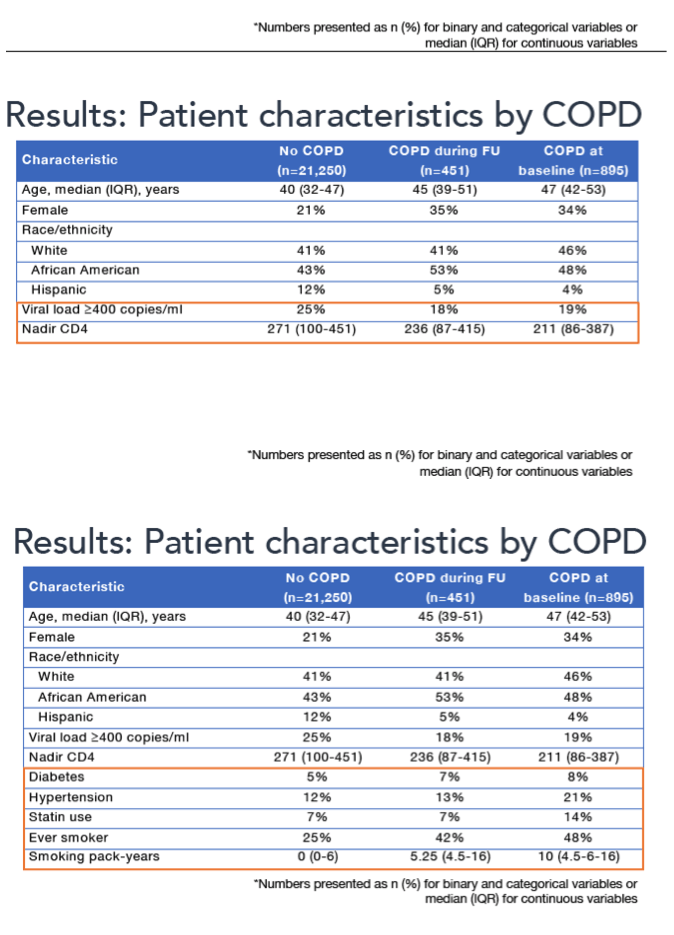
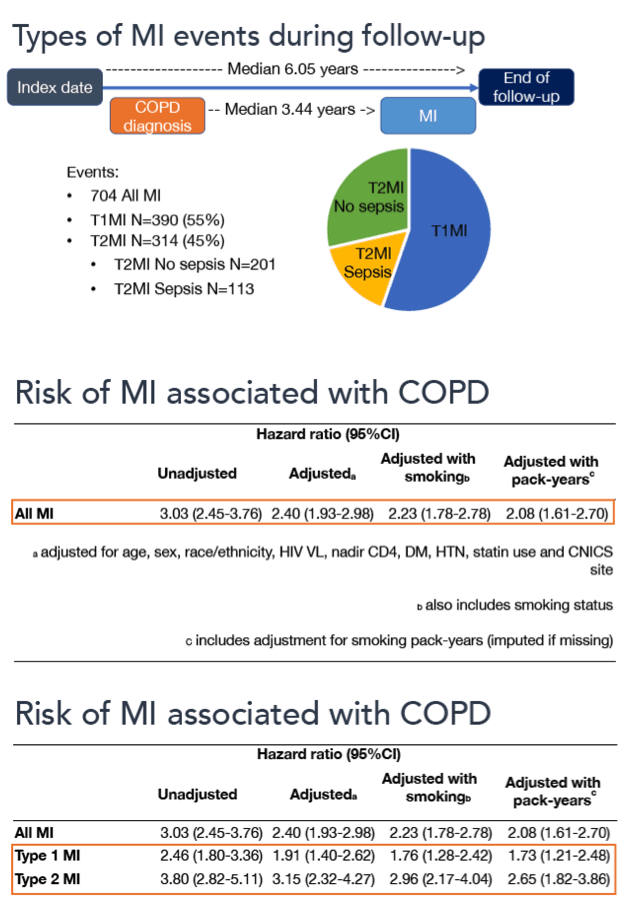
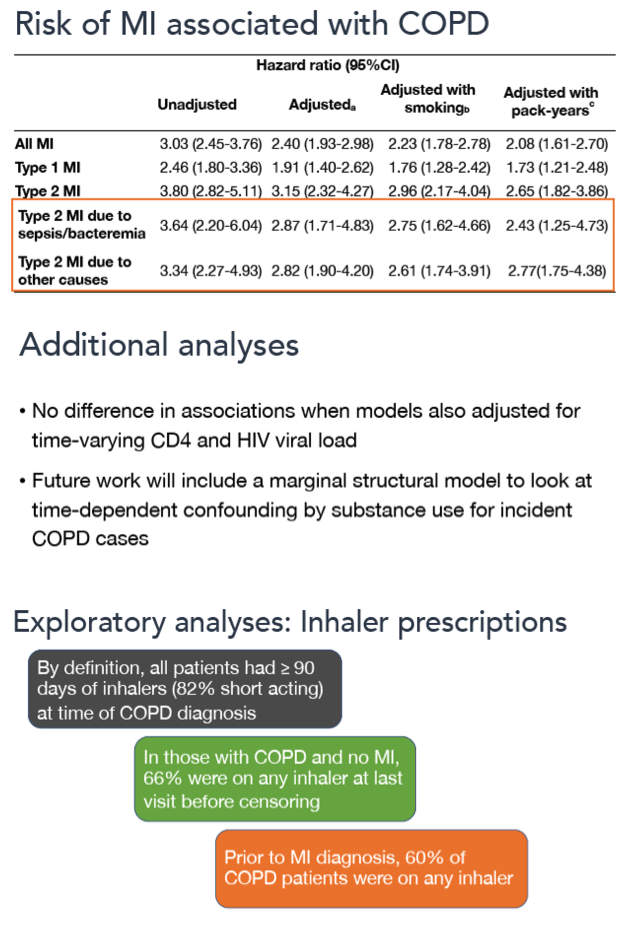
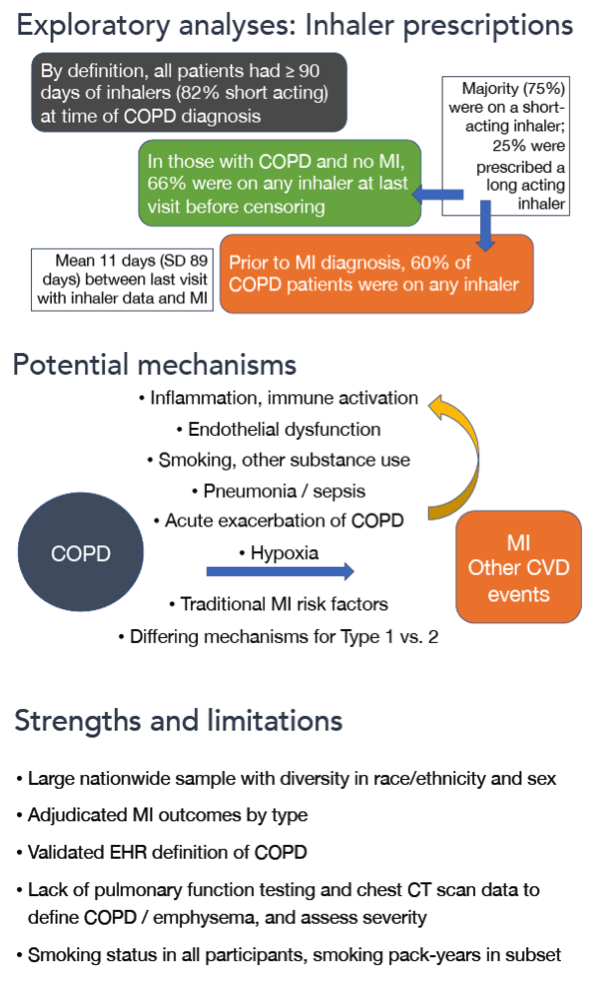
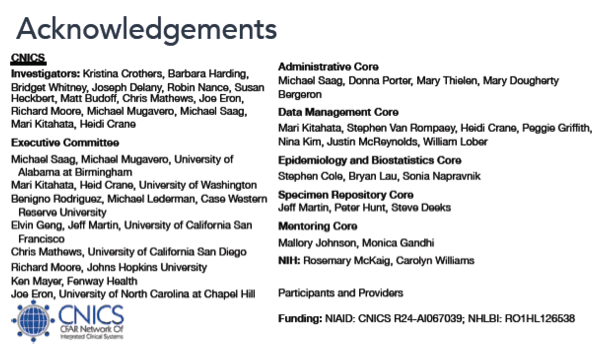
|
| |
|
 |
 |
|
|